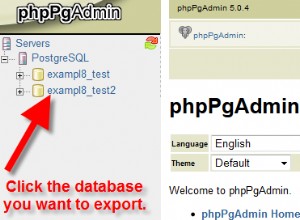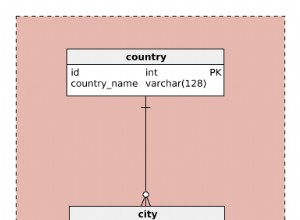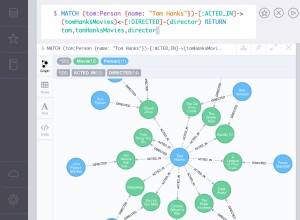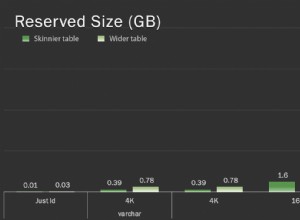Sie könnten ein benutzerdefiniertes Aggregat schreiben, um Ihr spezifisches Array von Arrays zu handhaben, z. B.:
DROP TABLE IF EXISTS e;
CREATE TABLE e
(
id serial PRIMARY KEY,
alert_type text,
date_happened timestamp with time zone
);
INSERT INTO e(alert_type, date_happened) VALUES
('red', '2011-05-10 10:15:06'),
('yellow', '2011-06-22 20:01:19');
CREATE OR REPLACE FUNCTION array_agg_custom_cut(anyarray)
RETURNS anyarray
AS 'SELECT $1[2:array_length($1, 1)]'
LANGUAGE SQL IMMUTABLE;
DROP AGGREGATE IF EXISTS array_agg_custom(anyarray);
CREATE AGGREGATE array_agg_custom(anyarray)
(
SFUNC = array_cat,
STYPE = anyarray,
FINALFUNC = array_agg_custom_cut,
INITCOND = $${{'', '', ''}}$$
);
Abfrage:
SELECT
array_agg_custom(
ARRAY[
alert_type::text,
id::text,
CAST(extract(epoch FROM date_happened) AS text)
])
FROM e;
Ergebnis:
array_agg_custom
--------------------------------------------
{{red,1,1305036906},{yellow,2,1308787279}}
(1 row)
BEARBEITEN:
Hier ist der zweite, kürzere Weg (das heißt, Sie brauchen array_agg_custom_cut nicht Funktion, aber wie Sie sehen, zusätzlich ARRAY Ebene ist in der Abfrage erforderlich):
CREATE AGGREGATE array_agg_custom(anyarray)
(
SFUNC = array_cat,
STYPE = anyarray
);
SELECT
array_agg_custom(
ARRAY[
ARRAY[
alert_type::text,
id::text,
CAST(extract(epoch FROM date_happened) AS text)
]
])
FROM e;
Ergebnis:
array_agg_custom
--------------------------------------------
{{red,1,1305036906},{yellow,2,1308787279}}
(1 row)




